How Many Clubs Does a Beginner Need? Save Your Money to Start With!
This post contains affiliate links from which Golfing Focus earns a commission (at no cost to you).

When you start out as a beginner golfer you clearly need some clubs to get started.
The rules of golf say you are allowed to use 14 clubs out on the course but is that right number for someone new to the game?
It’s a decision beginners want to get right for obvious reasons.
Also golf can be expensive so any beginner looking at their first set of golf clubs can potentially see themselves having to make a major investment just to get started.
So how many golf clubs does a beginner need? Beginner golfers should aim for 8-10 clubs to start with rather than a full set of 14. Junior golfers only need 5-7 clubs to get started. A reduced number of clubs makes club selection easier and enables beginners to build up their skill level gradually by improving the quality of their practice.
And the choice of the number of clubs is only one thing for a beginner when it comes to that first set.
There are a number of other elements that need to be considered which can make that choice seem a bit bewildering.
How many of the different types of clubs (woods, hybrids, irons, wedges) do you need?
What about the different types of shafts available? Does the height and arm length of the golfer matter?
Should all beginner golfers – men, women, seniors, juniors – all get the same clubs?
In this article we aim not only to explain why any beginner should choose a reduced number of clubs to start with but also to simplify the process of choosing that first set of clubs so that you save your money to start with.
[If you are interested in the best clubs for beginners according to Golf Monthly and Today’s Golfer check them out on Amazon
- Macgregor Golf CG3000 Set & Golf Bag
- Aspire XD1 Ladies Womens Golf Clubs & Bag
- Callaway Golf XJ Junior Golf Set & Golf Bag]
‘Woods’ for Beginners
The key with a set of golf clubs is that you have enough to cover the shots you will be required to play – long shots, short shots, chip shots, bunker shots, putts etc.
And when it comes to long shots, including shots from the tee, it is the ‘woods’ which are designed to go the furthest.
One of the early quirks of golf that beginners quickly learn though is that ‘woods’ are not actually made out of wood.
They used to be before golf’s technology revolution started in the 1990’s but today they are made all made of metal for primarily two reasons – perimeter weighting and a lower centre of gravity.
Using metal allows ‘woods’ to be made with much bigger club heads and therefore much more perimeter weighting.
This is in turn means a lower centre of gravity further back from the club face which in laymen’s terms translates to ‘woods’ with much larger sweet spots and which are easier to hit consistently well by beginner golfers.
The ‘driver’ or 1-wood (or the ‘big dog’ to give it its’ occasional slang name) is the biggest and longest club in the golf bag and the one that hits the ball the furthest.
It also needs to be hit, unlike other clubs, with a slightly upwards path at impact and as such can be difficult to control and hard for a beginner to learn right away.
Don’t be put off though.
Whatever anyone says about how other parts of the game are more important the reality is that extra driving distance has the most impact on the highest scoring golfers.
As a result ALL beginners should have a driver in their bag.
Beginners should also opt for a driver with at least 10 degrees of loft which will give you a better chance of getting the ball soaring high into the air.
Why does this matter?
Simply because getting the ball flying higher in the air is a key thing for distance.
It can also reduce sidespin so your drives fly straighter.

Thankfully modern drivers are far better now!
Other than the driver there are multiple ‘woods’ available which increment in number above the driver – i.e. 2-wood, 3-wood, 4-wood, 5-wood etc.
These are known as ‘fairway woods’ of which the 3-wood and 5-wood are the most common.
7-woods, 9-woods and 11-woods do also exist but are less common and better covered together with ‘Hybrid clubs’ which we’ll come onto later.
A 3-wood is generally a half-inch shorter than a driver and ‘woods’ reduce in length increments, and increase in loft, the higher their number.
And a shorter wood and more loft equals less distance.
Beginners will want eventually to graduate to having a 3-wood in their bag but to start with a 5-wood is a better bet for the following reasons.
5-woods are easier to hit for beginners, more versatile, excellent for long fairway shots and can also be used as an alternative from the tee when you get started.
Irons and Hybrid Clubs for Beginners
After a golfer has hit their tee shot and is getting closer to the green ‘irons’ start coming into play.
Historically they come with the numbers 3-9 (i.e. 3-iron, 4-iron, 5-iron etc) and the closer you get to the green the higher the number of iron you are going to use.
And as with the ‘woods’ as the number of the iron increments so does the loft together with a reduction in distance that the iron will typically go.
Cool fact: 5-time Major Championship winner Seve Ballesteros started playing golf on the beaches near his family’s home with only one club – a 3-iron given to him by his oldest brother Manuel.
For example the average beginner male golfer will hit a 5-iron when approximately 125 yards away from the green but use a 9-iron if only 90 yards away.
But with the advancement of golf technology has come another option for golfers over the last 10 or so years.
And that is ‘hybrid’ clubs.
Hybrids a combination of the design features of clubhead of a wood and the length of an iron shaft.
They are essentially a ‘best of both worlds’ solution and the reason for their introduction in recent times has simply been because it makes the average player’s life much easier.
Hitting long irons (e.g. 3-iron, 4-iron) well has been a challenge for golfers since the game began.
Even the best golfers in the world have always found this part of the game difficult.
But the design features of hybrids have allowed golfers of all standards, and especially beginners, to hit long shots with much more confidence.
Hybrids are more forgiving of bad shots, more versatile, designed so golfers can hit the ball higher, and better equipped to compensate for the typically lower swing speeds of beginner golfers which is an enemy of good long iron play.
And the additional good news is that golf manufacturers have made things easy and hybrids typically have the same loft and are numbered exactly the same as their comparable irons.
So if a golfer wanted to replace a 3 iron with a hybrid, the choice would be for a 3 hybrid. If it was a 4-iron that was being changed it would be a 4 hybrid and so on.
| HYBRID CLUB | EQUIVALENT IRON / WOOD |
| 1 Hybrid | 1 iron / 4 wood |
| 2 Hybrid | 2 iron / 5 wood |
| 3 Hybrid | 3 iron / 7 wood |
| 4 Hybrid | 4 iron / 9 wood |
| 5 Hybrid | 5 iron / 11 wood |
| 6 Hybrid | 6 iron / 13 wood |
| 7 Hybrid | 7 iron / 15 wood |
What does this all mean for beginners starting out?
We would recommend having at least 2 hybrids in your bag and starting your irons at either a 5-iron or 7-iron.
A beginner should certainly not have a traditional 2, 3 or 4-iron in their bag.
One option would be to choose a 3 and 4 hybrid and then add a 5-iron, 7-iron and 9-iron.
Or alternatively 3 and 5 hybrid (with an option of a 4 hybrid also) and adding a 7-iron and 9-iron.
Skip the even-numbered clubs (e.g. 6-iron, 8-iron) for now.
There will be plenty of time to build up to the full set of irons at a later stage once you’ve got better by focusing your practice on a reduced number to start with.
Wedges and Putters for Beginners
Wedges are technically another ‘iron’ club but they are a bit more specialised and so worthy of some consideration by themselves.
Wedges have the highest lofts of all the golf clubs – anywhere from 45 to 64 degrees – and are designed for the shortest shots you play including chipping and bunker play.
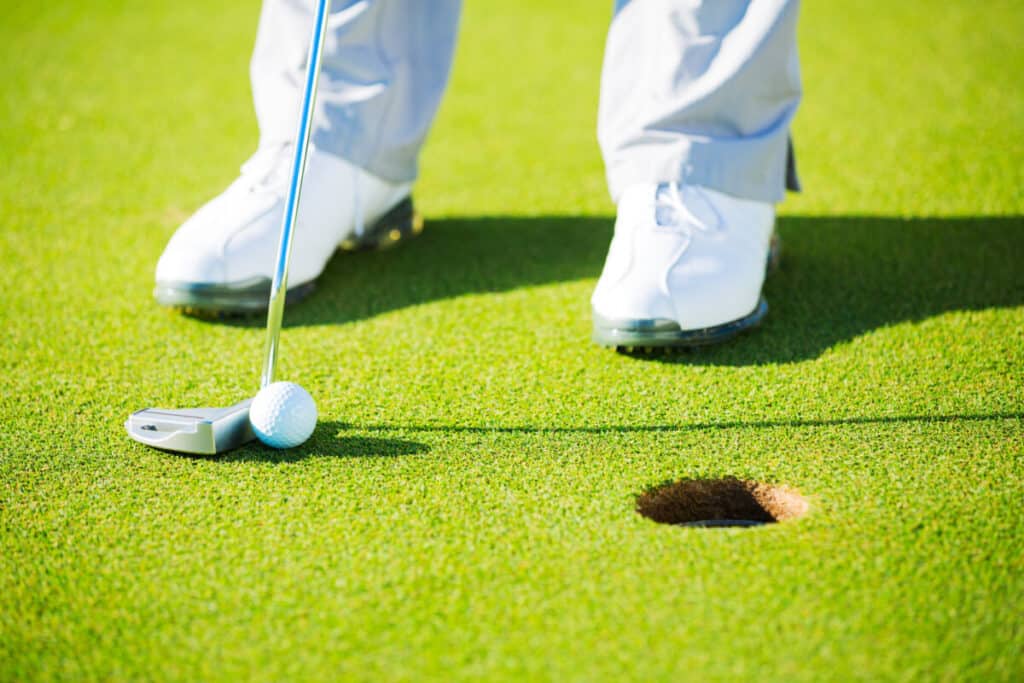
Given their versatility, you will also inevitably find yourself using them throughout your golf career for all sorts of shots you would never imagine before you started playing.
Whether that be hitting from a path or a road, out from beneath a bush or tree, or indeed out of the branches of a tree itself (yup, that can happen!) wedges are ideal clubs to help you play out of all manners of messes you may find yourself on the golf course.
And as with everything in golf now there are a huge amount of options when it comes to wedges.
There are pitching wedges, gap wedges, sand wedges and lob wedges and all available in any combination of loft you can think of between 45 and 64 degrees.
The two main wedge types though are the pitching wedge (PW) and the sand wedge and a beginner will definitely want a pitching wedge in their golf bag.
A sand wedge (SW) is also an option for a beginner – to be used in the main as the name suggests for bunker shots – however for someone just taking up the game it is arguable whether it is necessary to have one to begin with.
Bunker technique takes a bit of time to develop and a pitching wedge can do just fine initially for a beginner’s chipping and bunker shots.
When it comes to playing on the greens there is thankfully only one option available to all golfers and that is the putter.
All players need one and it is a must for any player’s golf bag.
There are many hundreds of putter types to choose from and there is no right or wrong answer as to which one a beginner should choose.
The most important thing when it comes to a putter is simply comfort.
You need a putter that when you look down on it feels and looks good to you and which ideally gives you confidence.
You will find that’s very important when it comes to holing that all important putt to win the match against your friends!
So just pick up a few if you can and choose the one that feels the most comfortable based on its length and weight, and how the strike of the ball on the putter face feels.
Lofts, Shafts and the Long and the Short of it
Before making any final decision on numbers and types of golf clubs there are a few additional things for a beginner to be aware of.
And the reason we mention them is simply to try and remove any additional areas of confusion which can potentially crop up as beginners try to wade through the huge amount of clubs which are available.
The first of these is in regard to lofts of golf clubs.
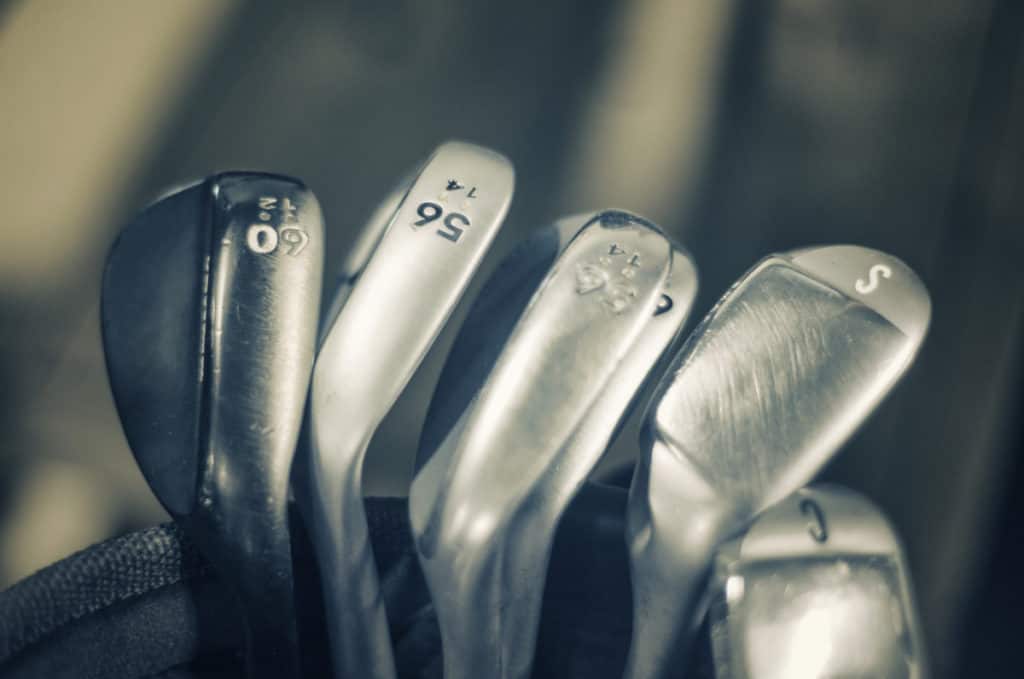
One of the consequences of the explosion of golf technology over the last 20-30 years has been the move away from every club having a definitive loft which is common across the game.
As every golf swing is different golf manufacturers have responded by creating different types of clubs that can best serve that swing.
Every swing has different needs in terms of lofts therefore to cater for this different manufacturers have sometimes created the same numbered club having different lofts.
That obviously doesn’t mean one manufacturer will name a 45 degree lofted wedge a driver but it does mean that club lofts can often overlap.
For example a 3 hybrid in one club maker’s set may be a 4 hybrid in another.
The key thing here is just to make sure that the clubs you do choose cover a good range of lofts to enable you to be able to cover a good range of the distances your shots will need to go on the course.
If you choose a 21 degree 3-hybrid for example don’t then add a 22 degree 4-hybrid to your set.
Make sure there’s a few degrees difference between the clubs you choose.
Shafts again offer an ever increasing number of alternatives.
For any beginners though it’s important to keep things simple so just stick to a ‘regular’ flex shaft to get started throughout your set.
It is highly unlikely you are going to have the required clubhead speed to start with to justify a different shaft on your clubs.
The only caveat when it comes to shafts I would add is that for senior and potentially women golfers it may be worth considering graphite shafts.
Clubs with graphite shafts tend to be lighter than standard clubs and therefore better suited to the slower swing speeds generated by some senior and women golfers.
The final thing to bear in mind is height.
While for the vast majority of golfers a standard length club is absolutely fine if you are taller or shorter than the average height it may be worth looking at shorter or longer clubs.
As a rough rule of thumb for men standing 5 ft 4″ and below clubs which are 1/2″ shorter may work better.
By comparison men taller than 6ft 2″ may want to look at over length clubs.
Women beginner golfers 5 ft 8″ and above should look at men’s standard length clubs in preference to women’s standard length while beginners 5 ft 2″ and below may want to consider women’s shorter clubs.
Beginners Golf Club Summary
As we mentioned at the beginning of this post the decisions for beginners around selecting the correct number and type of clubs to get started can seem overwhelming at times.
The amount and variety of clubs available today is quite staggering.
So to help we’ve summarised below what in our view would be a good number and types of clubs to get started with for men, women and juniors.
| Clubs to Get Started with | Beginner Men & Women | Beginner Juniors |
| Driver | Yes | Yes |
| 2 Hybrid / 5-wood | Yes | Yes |
| 3 Hybrid / 7-wood | Yes | |
| 4 Hybrid / 9-wood | (Option) | |
| 5-iron / 5 Hybrid / 11-wood | Yes | (Option) |
| 7-iron | Yes | Yes |
| 9-iron | Yes | Yes |
| Pitching wedge (PW) | Yes | (Option) |
| Sand wedge (SW) | (Option) | |
| Putter | Yes | Yes |
And we would also want to emphasise at this point one of our main tips for any beginner golfer starting out.
And that is to save your money to start with.
We could never argue that it is a good idea for any beginner to rush out a spend a lot of money on equipment before they have had a chance to have a go at the game first to see if it is for them and worth some more investment.
Look for second hand clubs to start with. And second hand doesn’t mean you have to buy them either.
If any of your friends or work colleagues are into golf ask them whether they could lend you some clubs to let you get started or even give you if they are feeling generous.
Saying that if they give you a ‘wood’ made of ‘wood’ they are probably too old!
There will be plenty of time to spend a lot of money on clubs later on if you want to!
More top articles related to this topic
- How Long Does a Round of Golf Take – for 1, 2, 3 & 4 Players?
- Should a Beginner Get Golfer Fitted for Clubs? Focus On Enjoyment
- Should Beginners & High Handicappers Use a Driver? Yes & Yes
- Going the Distance? How Far Should Beginners Hit A Golf Ball?
- How Much Do Golf Clubs Cost? A Giant Guide With 32 Examples
- Are Hybrid Irons Easier to Hit? 7 Reasons to Choose the Easy Way
- How Much Should You Pay for Golf Lessons? A Complete Guide
- How Many Golf Lessons Do You Need? 3 is the Magic Number
- What Should You Wear Golfing? Do’s and Don’ts for Men & Women
- Are Golf Shoes Worth It? Just Make Sure You’ve Got a Grip!
- What’s the Best Age to Start Golf? Start Kids Young but Keep it Fun!
- The 5 Best Tips for Beginner Golfers Follow the KIS Principle
- 18 Golf Myths Exposed: Break Par With Facts!
RECENT ARTICLES
LEGAL INFORMATION
This site is owned and operated by Golfing Focus Limited, a private limited company whose registered office is in London, UK. Golfing Focus Limited is a participant in the Amazon Services LLC Associates Program, an affiliate advertising program designed to provide a means for sites to earn advertising fees (at no cost to you) by linking to Amazon.com. Golfing Focus Limited also participates in other affiliate programs with the eBay Partner Network, FlexOffers, CJ.com, Svorn and other sites and is compensated for referring traffic and business to these companies (again at no cost to you).
Our Socials

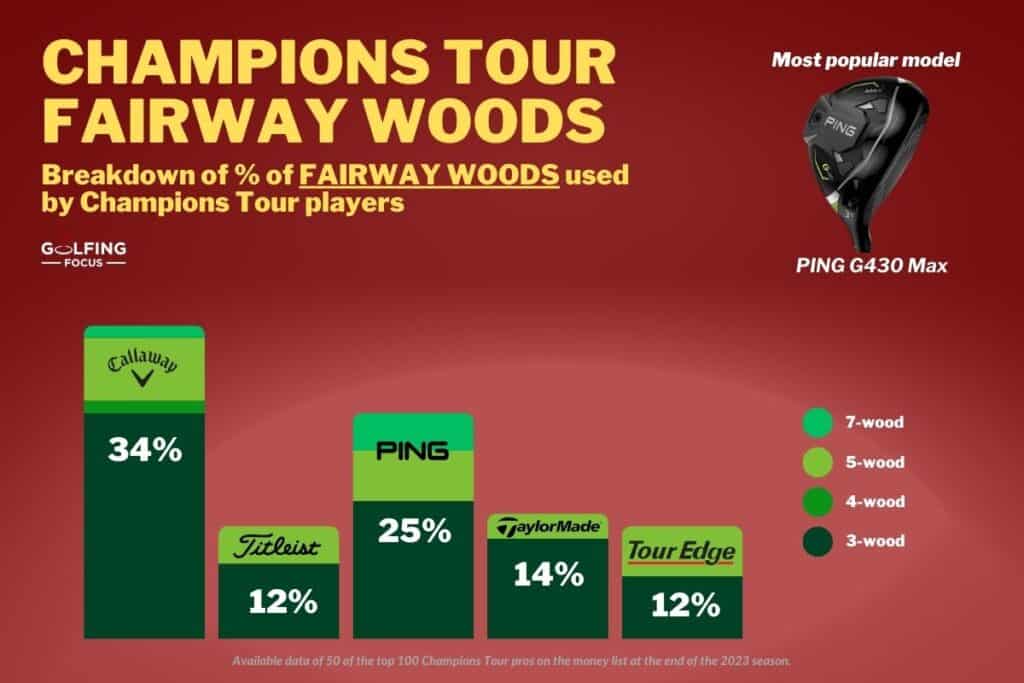
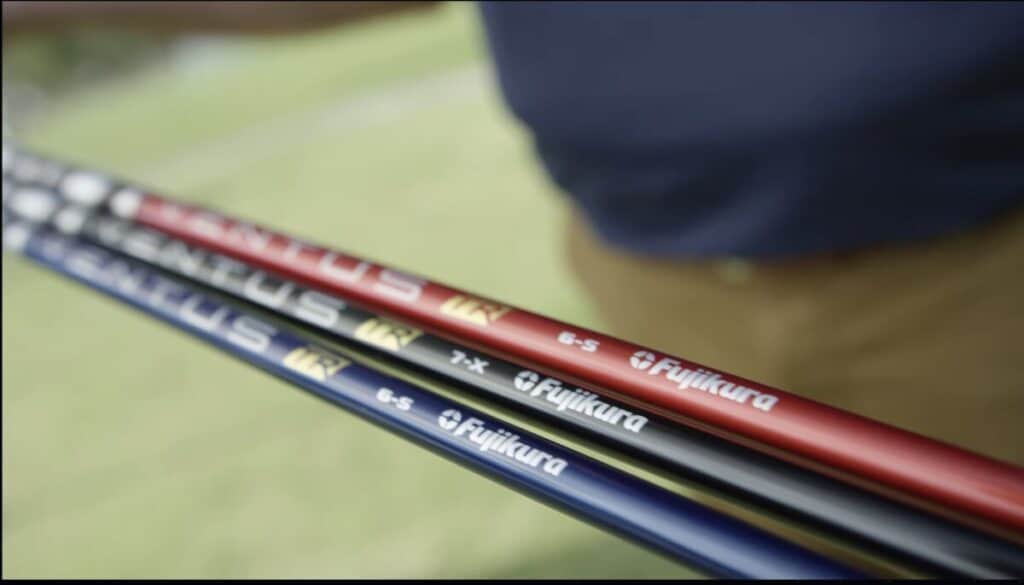
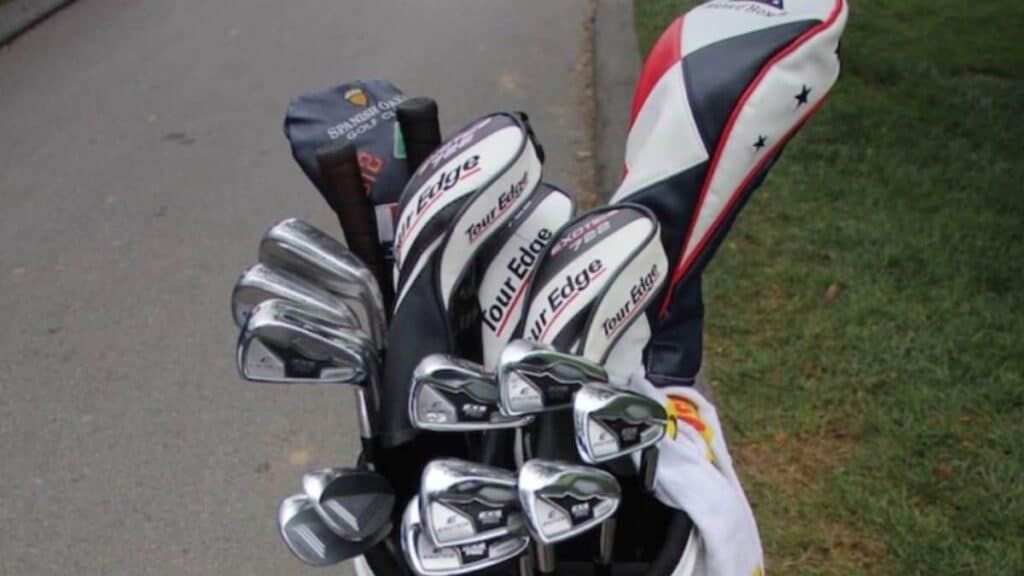
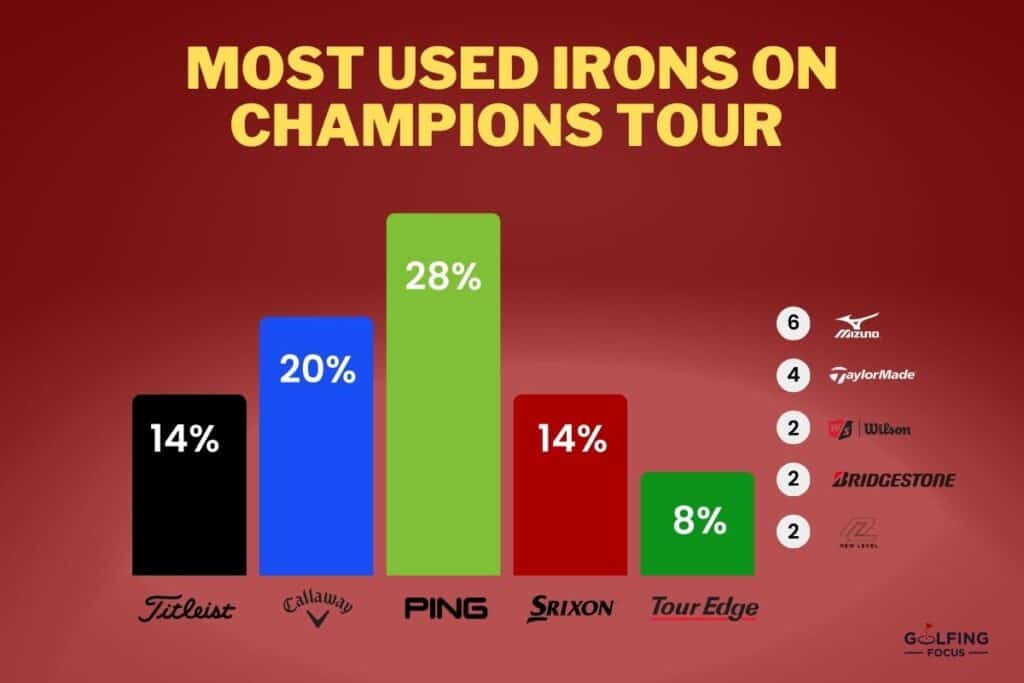

Leave a Reply